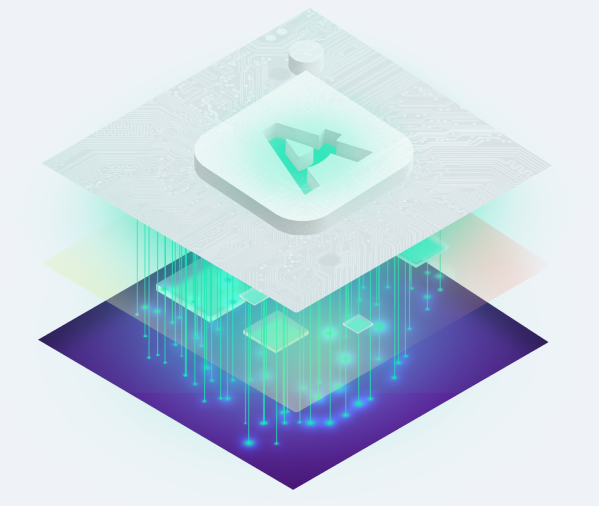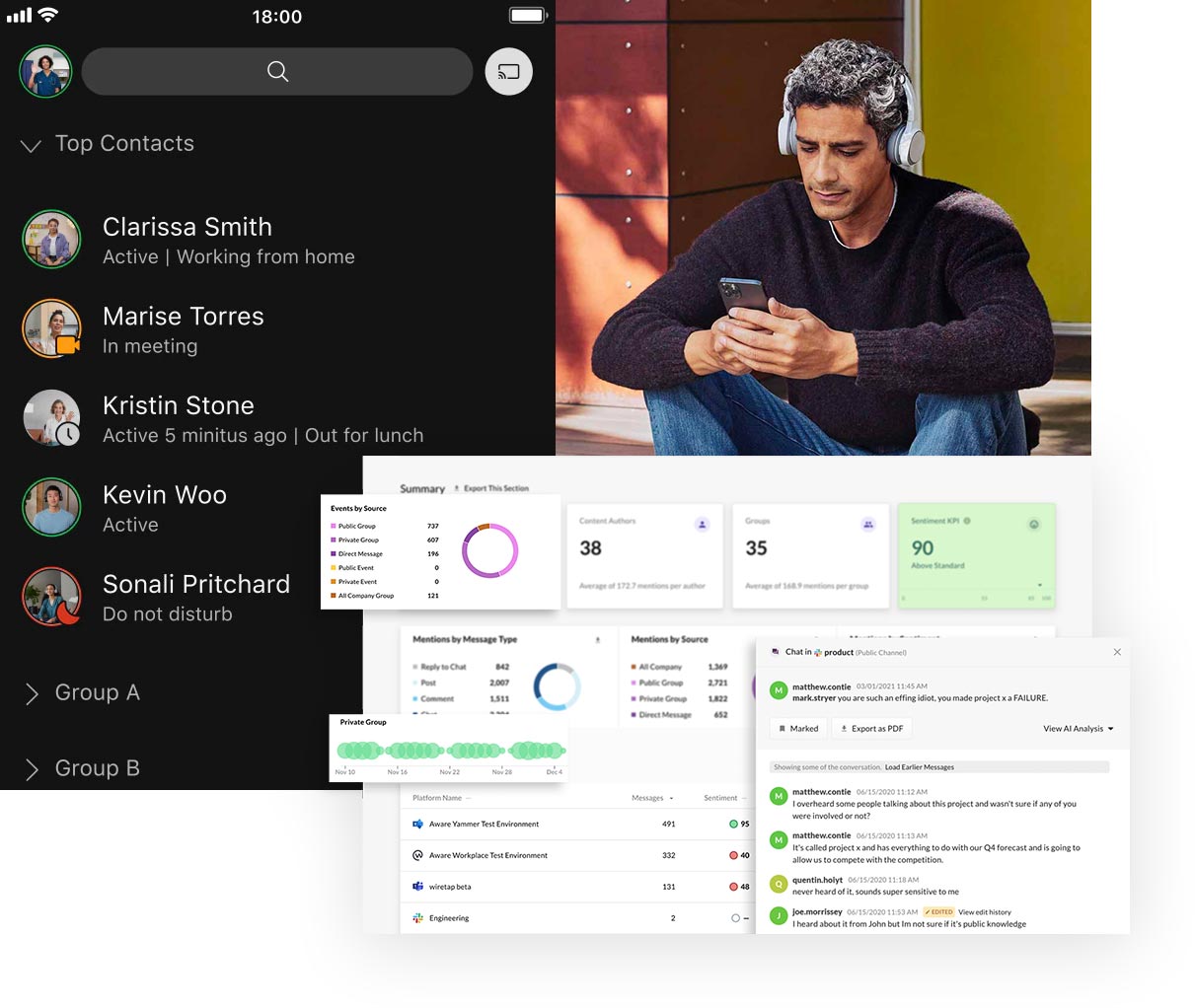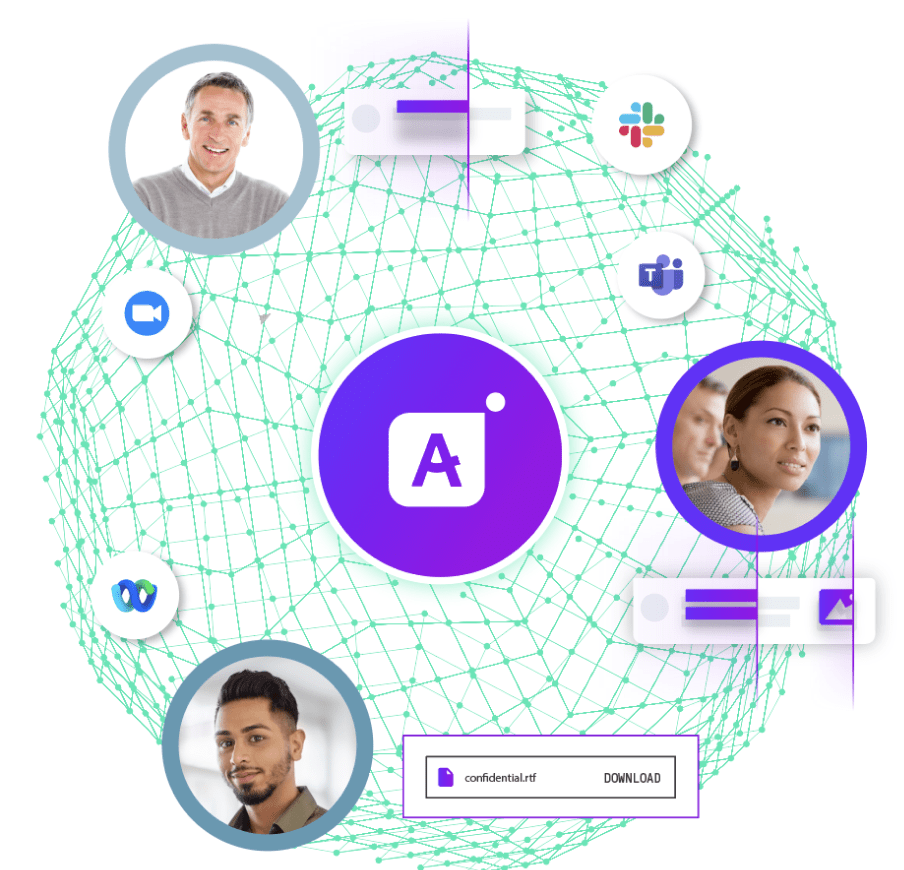The Digital Workplace: Everything You Need to Know
by Aware
The concept of the workplace has undergone a remarkable transformation over the past few years. The traditional brick-and-mortar office is no longer the sole hub of productivity. Instead, organizations are increasingly adopting the concept of a "digital workplace." In this post, we'll delve into what a digital workplace is, how it differs from a physical workplace, and the profound impact it has on modern companies.
What is a Digital Workplace?
A digital workplace is an environment that supports everyday working functions through the use of cloud-based applications that connect employees regardless of their physical location. Successful digital workplaces prioritize internal communication and collaboration between coworkers and democratize access to information for all employees via the use of new technologies.
Contents
- What’s the difference between a digital and a physical workplace?
- How are digital workplaces transforming modern companies?
- The benefits of digital workplace solutions
- Key features of a successful digital workplace
- How do companies use digital workplaces?
- Is a digital workplace the right choice for you?
- Planning for a digital workplace
What’s the difference between a digital and a physical workplace?
In simple terms, a physical workplace is a specific location where employees go to perform the duties of their job, whereas a digital workplace is a remote environment accessible from almost anywhere. However, there are more differences than location alone that distinguish physical from digital workplaces.
- Technology-Centric: The digital workplace relies heavily on technology, with a focus on digital tools, software, and cloud-based platforms, as opposed to physical resources like paper documents and in-person meetings.
- Flexibility and Accessibility: Digital workplaces offer flexibility in terms of working hours and accessibility to information, whereas physical workplaces often follow a rigid schedule and require physical presence.
- Efficiency and Collaboration: Digital workplaces emphasize efficient processes and seamless collaboration through online channels, while physical workplaces may face challenges in these areas.
How are digital workspaces transforming modern companies?
The digital transformation introduced a slew of collaboration and productivity tools that catered to the diverse needs of employees, from project management and communications to virtual whiteboards and time tracking. The pandemic accelerated their adoption, and today online-based work has shifted from a niche field to a highly sought after and widespread way of doing business.
The cloud-based software solutions that enable asynchronous collaboration across the enterprise have become a hallmark of the remote work era. They facilitate real-time data sharing, document collaboration, and accessibility from anywhere, improving efficiency and productivity. By embracing new technologies, companies can tap into a global talent pool, reduce overhead costs, and provide employees with a better work-life balance.
Even organizations that remain committed to a physical office space have embraced the use of cloud-based software that accelerates employee productivity and performance. These tools changed the world of work forever, and optimizing digital workplace capabilities can improve efficiency, strengthen company culture, and bring the business into the new era of work.
The benefits of digital workplace solutions
Whether a company embraces a fully remote workflow, goes hybrid, or remains committed to its physical office, it can still unlock efficiencies by streamlining processes using digital workplace tools. From automating repetitive tasks to reducing paperwork, there are many benefits to going digital.
By consolidating access to information and fostering open communication, digital workplaces also enhance collaboration among employees, teams, and departments. The speed of work accelerates when employees are free to cut through red tape and business hierarchies and go directly to the source for the information they need to perform their duties effectively.
In turn, making employees’ lives easier enhances the overall employee experience, increasing job satisfaction and improving employee retention. Your people want to be able to work effectively and with autonomy, and a digital workplace strategy can enhance these capabilities across the organization.
Being primed for remote or hybrid work positions the company to be able to adapt quickly to geopolitical events that may impact the physical workplace. Anything from power outages and extreme weather to another pandemic shutdown can force companies to pause operations unless they can enable employees to work from home. Digital workplaces are tailor-made for remote work, providing the tools and infrastructure to succeed in a distributed work environment. Implementing them proactively can save the company valuable time should the need for flexible work arise.
Key features of a successful digital workplace
A successful digital workplace should encompass a range of key features and elements to maximize productivity, collaboration, and efficiency. Some of the most essential components to consider include:
- Usability: Employees may have varying levels of comfort and ability with new technologies, so consider how intuitive new tools are to use, and what training will be necessary to ensure all employees thrive in a remote workspace.
- Integrations: Any new application or technology should integrate effortlessly with other technologies already in use within the ecosystem. Connections should have minimal impact on end user experience and protect data during transfer.
- Collaboration: Enabling teams to work collaboratively within different workplace applications using features like shared whiteboards, virtual meeting rooms, and real-time messaging streamlines workflows and makes them more efficient.
- Customization: Allow users to personalize their digital workplace platform to match their workflow and preferences, meet accessibility needs, and foster a sense of community and pride in their workplace.
- Scalability: The digital workspace should be scalable to accommodate the growing needs of the organization, able to handle increased users and data without significant performance issues.
- Analytics and Reporting: Analytics tools that track usage patterns, employee engagement, and productivity metrics provide data-driven insights can help optimize the digital workplace experience.
- Document Management: A centralized repository for documents with version control and easy search functionality is essential for efficient information sharing and collaboration.
- Compliance and Governance: Implement governance policies and compliance controls to ensure that the digital workplace adheres to industry regulations and company standards.
- Security Measures: Prioritize data security and privacy with encryption, access controls, and regular security audits to protect sensitive information.
- AI and Automation: Incorporate artificial intelligence and automation to streamline repetitive tasks, provide insights, and enhance user experiences.
How do companies use digital workplaces?
Digital workplaces can benefit companies in multiple ways across all functions. For example, HR and administrative teams are better able to streamline access to data and information, and extract insights that inform better decisions to enhance employee engagement and support high productivity.
Equally, managers can keep a finger on the pulse of shifts within the workplace and better understand the events and topics that impact their people. And cloud-based business applications also benefit individual contributors in the workplace by facilitating easier collaboration and simplifying day-to-day processes.
Wherever an employee is based, a robust digital workplace infrastructure enables them to log in and immediately access everything they need to perform their duties efficiently and effectively.
Aware’s AI Data Platform supports this functionality by connecting to digital collaboration tools to surface real-time insights directly from the voice of the employee. Using these insights, executives and leaders across the enterprise can get the data they need to make faster decisions with greater certainty.

Discover how Aware's AI Data Platform works
Is a digital workplace the right choice for you?
When considering implementing a digital workplace for your organization, it's essential to assess your specific needs and company culture. Look for must-have features, consider customization options, and explore the best digital technologies available today to find the right fit for your business.
For each category of tools, several options exist for leaders to choose from. For example, Google Workspace and Microsoft 365 provide a range of similar applications that both meet requirements for email and instant messaging, word and data processing, creating presentations and more. Project and productivity software like Asana and Jira help keep business processes and workflows on track, and CRMs like Salesforce and HubSpot manage every step of the customer journey.
Selecting the right tool for your digital workplace will come down to factors such as functionality, cross-compatibility, and employees’ technical abilities. It often makes sense to select a family of applications designed to work together rather than building a digital workplace from multiple independent tools, but there are often exceptions where a standalone app becomes the preferred choice of end users. Many businesses find they use multiple tools to meet the same needs across different departments, for example HR might prefer collaborating in Teams while technical departments prefer Slack.
To limit the spread of shadow IT—unauthorized tools used for company purposes—it’s important to consult stakeholders from across the business to understand the functionality they need from the apps the company provides. Securing those apps should also be a proactive process, in order to protect the information stored and transmitted within their datasets. Aware connects to all major cloud-based collaboration tools using native APIs and webhooks to protect and manage data in real time from a single, centralized dashboard, without impacting the end user experience.

Explore Aware integrations now
Planning for a digital workplace
As you embark on your digital workplace journey, consider critical factors such as data management, compliance, digital security, and collaboration intelligence. The Aware AI Data Platform can be invaluable in addressing these challenges, ensuring a smooth transition to a digital workplace that enhances your organization's productivity and competitiveness.
The digital workplace represents the future of work, breaking down physical barriers and empowering employees to collaborate and excel in a digital realm. Embracing this transformation can lead to increased efficiency, better collaboration, enhanced employee experiences, and a more secure and adaptive work environment. It's time to step into the digital workplace era and pave the way for a brighter future of work.









